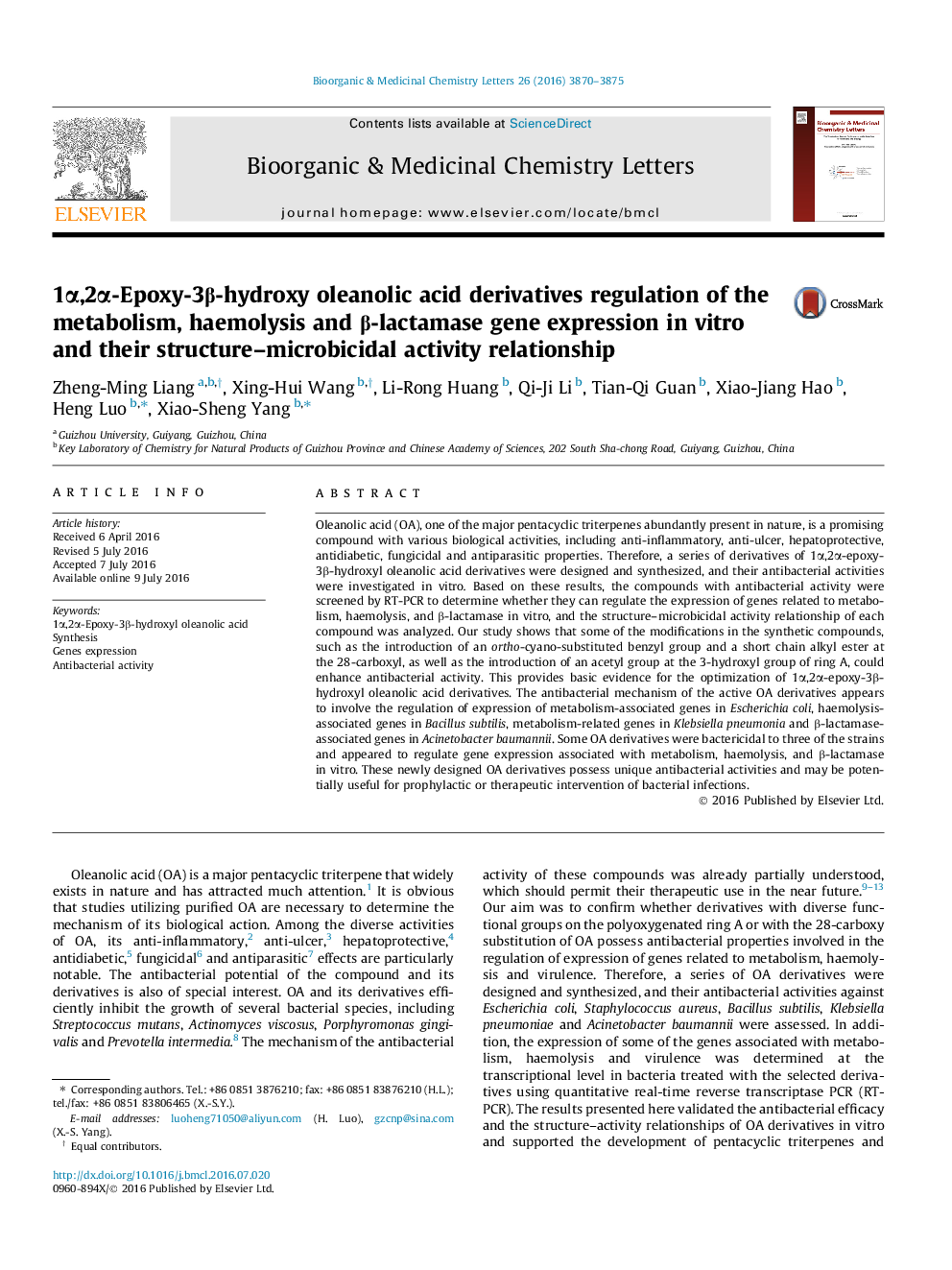| کد مقاله | کد نشریه | سال انتشار | مقاله انگلیسی | نسخه تمام متن |
|---|---|---|---|---|
| 1369712 | 981787 | 2016 | 6 صفحه PDF | دانلود رایگان |

• 16 OA derivatives were synthesized to evaluate the antibacterial activity.
• Modifying the 28-carboxyl of OA affects the activity.
• An acetyl group at 3-hydroxyl group of ring A in OA changes the activity.
• The OA derivatives showed good selectivity against the different bacteria.
• OA derivatives regulated expression of related genes in bacteria.
Oleanolic acid (OA), one of the major pentacyclic triterpenes abundantly present in nature, is a promising compound with various biological activities, including anti-inflammatory, anti-ulcer, hepatoprotective, antidiabetic, fungicidal and antiparasitic properties. Therefore, a series of derivatives of 1α,2α-epoxy-3β-hydroxyl oleanolic acid derivatives were designed and synthesized, and their antibacterial activities were investigated in vitro. Based on these results, the compounds with antibacterial activity were screened by RT-PCR to determine whether they can regulate the expression of genes related to metabolism, haemolysis, and β-lactamase in vitro, and the structure–microbicidal activity relationship of each compound was analyzed. Our study shows that some of the modifications in the synthetic compounds, such as the introduction of an ortho-cyano-substituted benzyl group and a short chain alkyl ester at the 28-carboxyl, as well as the introduction of an acetyl group at the 3-hydroxyl group of ring A, could enhance antibacterial activity. This provides basic evidence for the optimization of 1α,2α-epoxy-3β-hydroxyl oleanolic acid derivatives. The antibacterial mechanism of the active OA derivatives appears to involve the regulation of expression of metabolism-associated genes in Escherichia coli, haemolysis-associated genes in Bacillus subtilis, metabolism-related genes in Klebsiella pneumonia and β-lactamase-associated genes in Acinetobacter baumannii. Some OA derivatives were bactericidal to three of the strains and appeared to regulate gene expression associated with metabolism, haemolysis, and β-lactamase in vitro. These newly designed OA derivatives possess unique antibacterial activities and may be potentially useful for prophylactic or therapeutic intervention of bacterial infections.
Figure optionsDownload as PowerPoint slide
Journal: Bioorganic & Medicinal Chemistry Letters - Volume 26, Issue 16, 15 August 2016, Pages 3870–3875